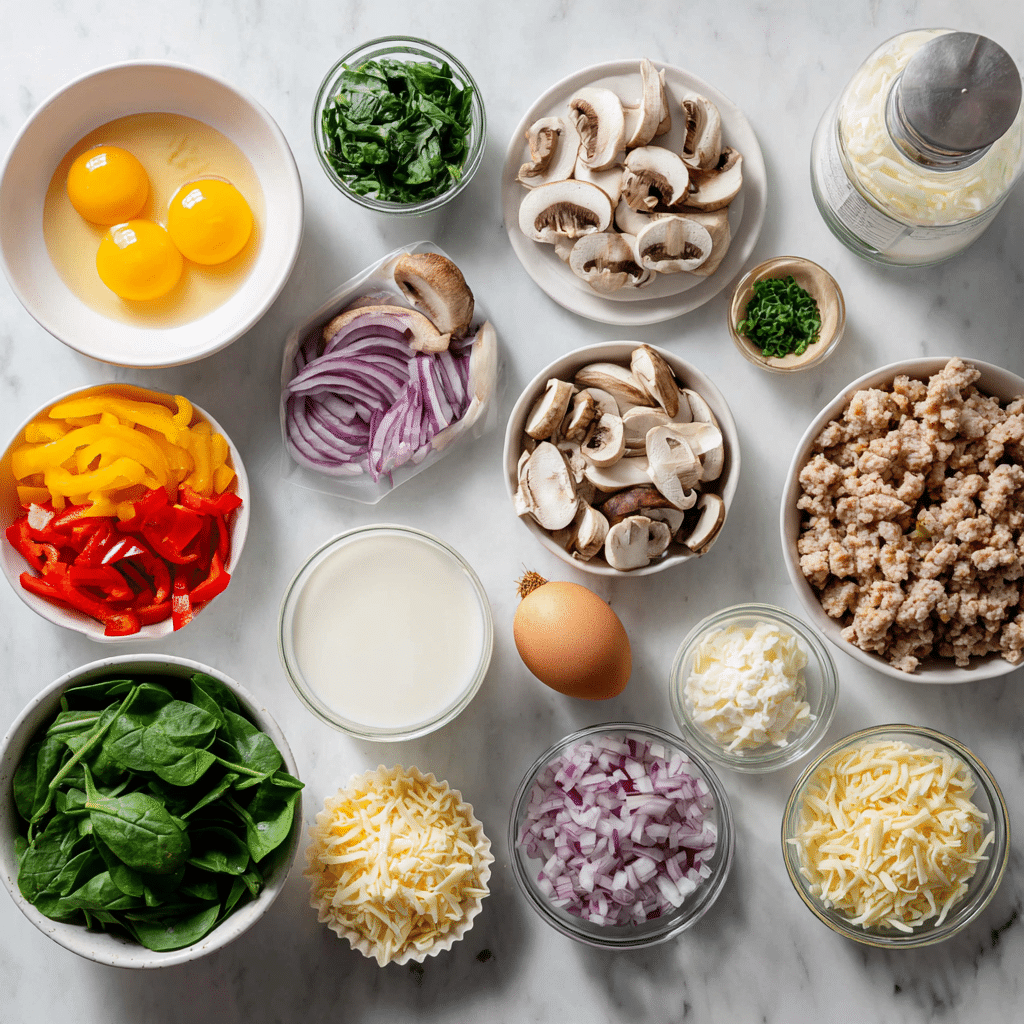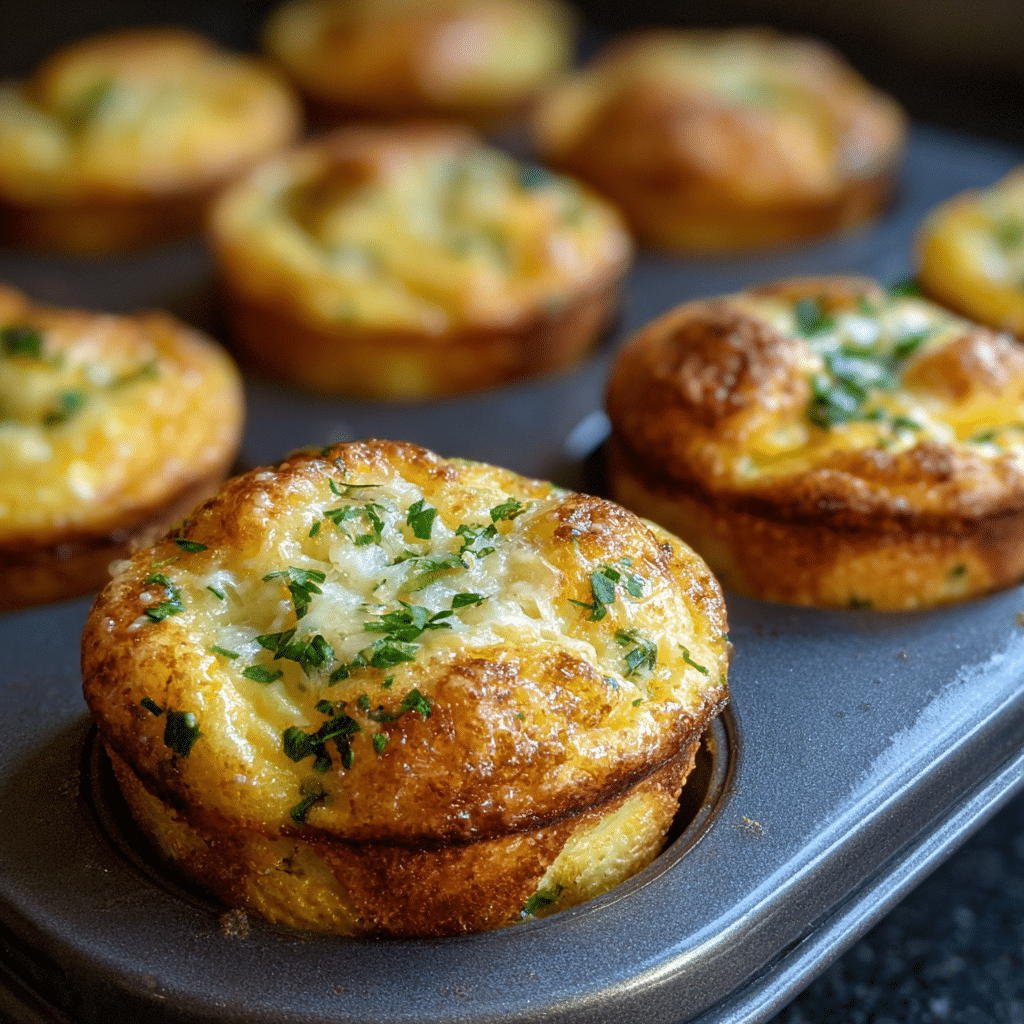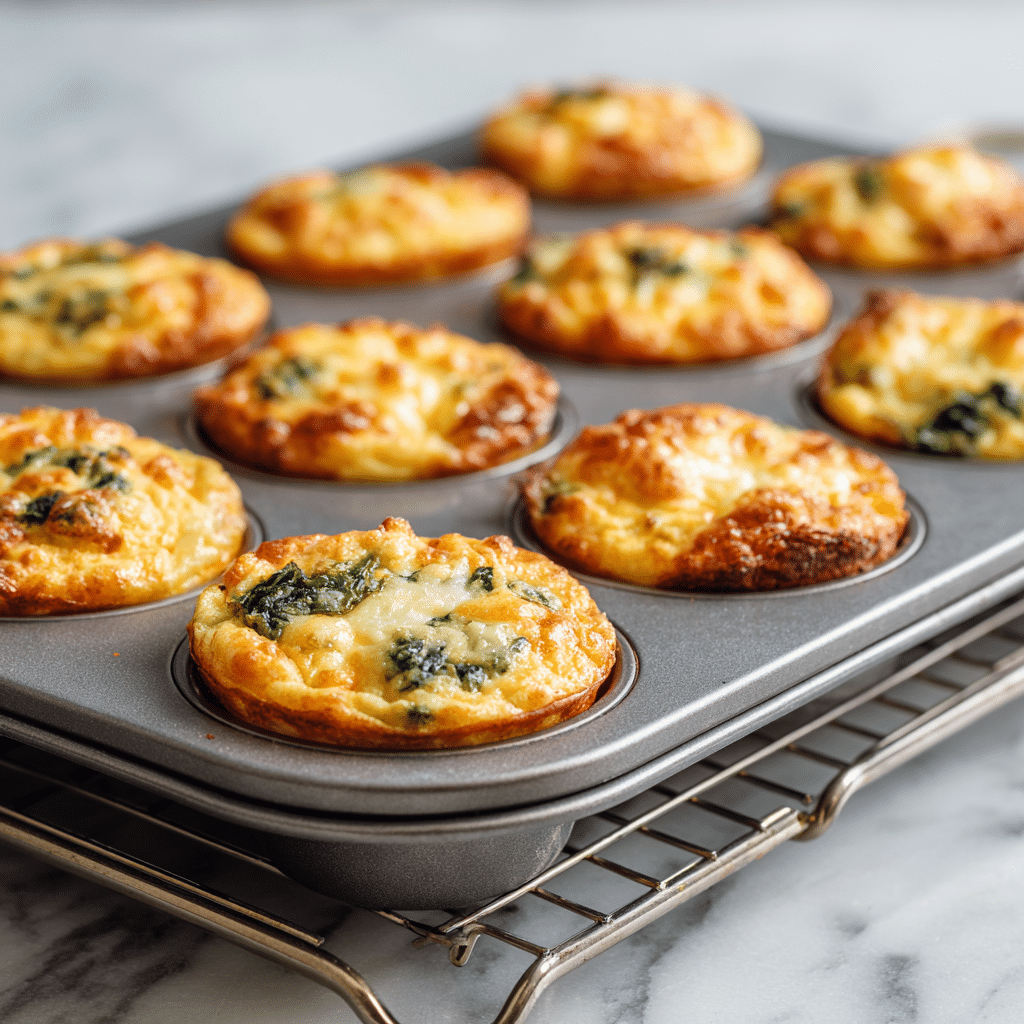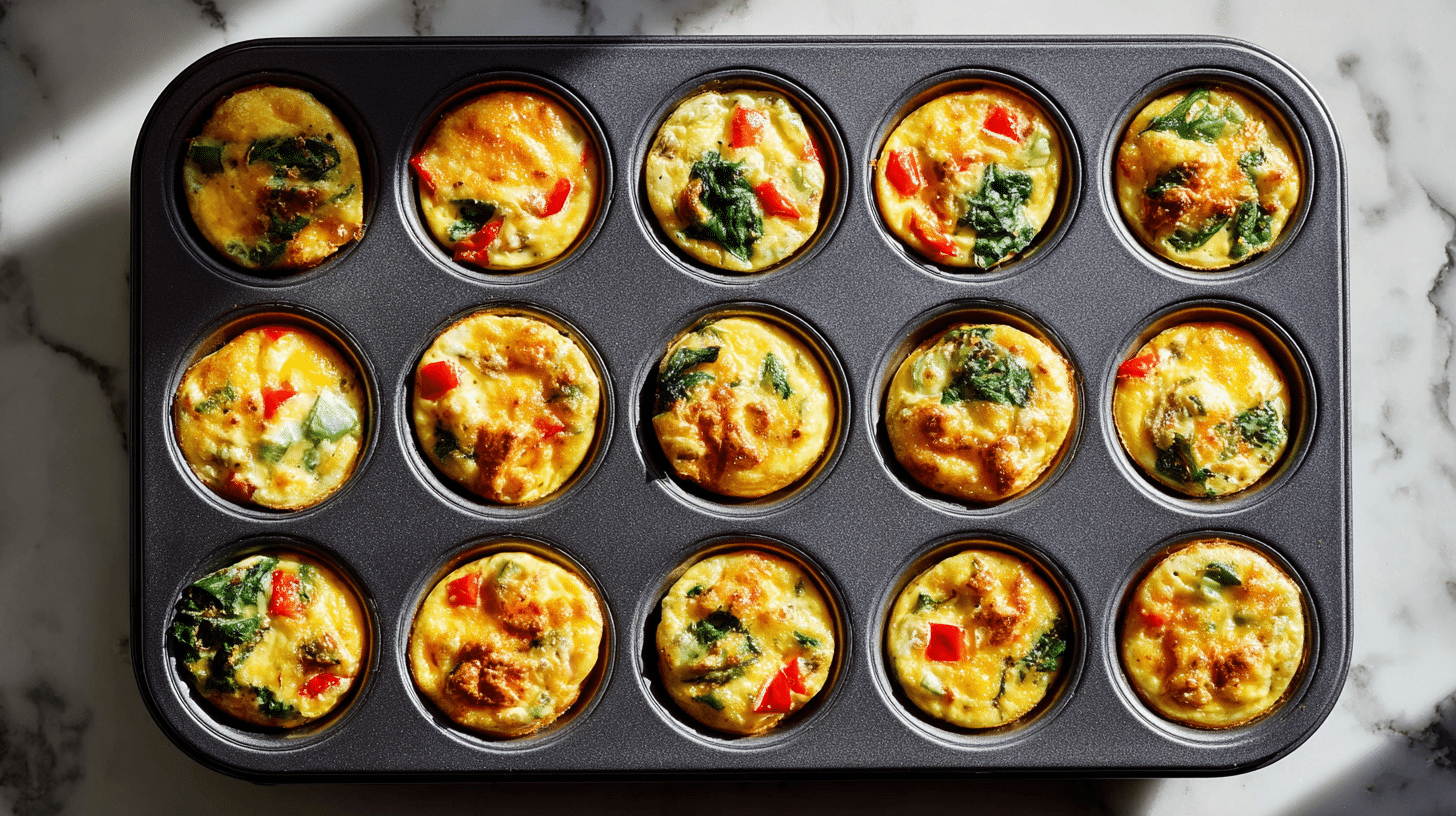
Mornings can be hectic, but Egg Muffins (Gluten-Free) make breakfast easy. These high-protein, flourless bites are fast to cook, simple to store, and full of flavor. Whether you’re gluten-intolerant or just looking to cut back on carbs, this recipe guide shows how to create satisfying egg muffins without wheat. You’ll get practical tips for picking ingredients, avoiding common mistakes, choosing the right flour, and replacing eggs if needed. We’ll also cover prep, storage, and creative variations so you never get bored. If you want a no-fuss meal that fits your schedule and your diet, this article is for you.
Egg Muffins (Gluten-Free): Essential Facts for a Healthy Breakfast
How These Muffins Save Time and Fuel Your Day
Egg Muffins (Gluten-Free) have become a go-to breakfast option because they combine convenience, nutrition, and flavor in one easy dish. These muffins require minimal prep and bake quickly, making them ideal for busy mornings or meal prepping ahead. The gluten-free aspect makes them safe for people with gluten intolerance or celiac disease. You can customize these muffins with various vegetables, cheeses, or meats, so they never get boring.
The best part is that Egg Muffins (Gluten-Free) don’t depend on flour or bread, which keeps carbs low and protein high. They reheat well, so you can grab one or two for a quick breakfast or snack on the go.
Nutritional Benefits of Egg Muffins (Gluten-Free)
One of the main benefits of Egg Muffins (Gluten-Free) is their excellent nutrient profile. Eggs supply high-quality protein, essential vitamins like B12 and D, and minerals such as selenium. Adding vegetables boosts fiber, vitamins, and antioxidants without adding gluten or excess carbs.
Because these muffins use no wheat flour, they avoid the blood sugar spikes linked to traditional muffins. This makes them a better choice for gluten-sensitive individuals or anyone watching carb intake. You can bake a dozen at once and enjoy nutrient-dense breakfasts throughout the week, all while following a gluten-free diet confidently.
Ingredients for Egg Muffins (Gluten-Free)
Essential Components: Eggs, Vegetables, Cheese, and Meats
Egg Muffins (Gluten-Free) start with simple, wholesome ingredients. Eggs act as the main binder, providing structure and protein. For a standard dozen muffins, use 8 to 10 large eggs for the best texture.
Add fresh vegetables like bell peppers, spinach, mushrooms, or onions for color, flavor, and nutrients. Make sure to drain or pat dry any watery vegetables to avoid soggy muffins.
Cheese boosts flavor and richness. Choose from cheddar, mozzarella, feta, or dairy-free cheese depending on your preference. Meats like turkey meat, chicken sausage. Always select gluten-free certified products to keep muffins safe.
Non-stick spray or silicone liners make removing muffins easy and reduce cleanup. Optionally, stir in a splash of unsweetened gluten-free non-dairy milk like almond or oat for extra moisture and fluffiness.

Choosing Gluten-Free Flour or No-Flour Variations
Many Egg Muffins (Gluten-Free) recipes skip flour completely, relying on eggs to hold everything together. This makes them naturally gluten-free and low-carb. However, some prefer to add 1–2 tablespoons of gluten-free flour for extra firmness or to absorb moisture from vegetables.
Popular gluten-free flours include almond flour, coconut flour, or commercial gluten-free baking blends. Almond flour adds a mild nutty flavor and healthy fats. Coconut flour absorbs a lot of liquid, so use sparingly. Blends often contain rice flour, tapioca starch, and xanthan gum to improve texture.
If you use flour, mix it well with dry ingredients before combining with eggs. This prevents lumps and ensures even distribution. For no-flour recipes, just reduce watery ingredients slightly and bake until set.
Common Mistakes to Avoid When Making Egg Muffins (Gluten-Free)
Overmixing the Batter and Its Effects
One of the most common errors when making gluten-free muffins is overmixing the batter. When you overmix, you risk developing too much structure from the flours or eggs, leading to dense or rubbery muffins instead of light and fluffy ones. Gluten-free flours vary in their absorbency and texture, so handling the batter gently is key. Mix ingredients just until combined to keep the muffins tender.
To avoid overmixing, add wet ingredients gradually and fold dry ingredients in with a spatula using gentle motions. Resist the urge to stir vigorously or too long.
Using the Wrong Gluten-Free Flour for Muffins
Selecting the wrong flour or blend can lead to poor muffin rise, dense crumb, or crumbly texture in your Egg Muffins (Gluten-Free). To avoid these issues, always test small batches when experimenting with new flours for these muffins. Following trusted recipes helps guarantee better results and ensures your Egg Muffins (Gluten-Free) stay moist, flavorful, and well-textured.
Remember, the flour you choose plays a vital role in how your muffins turn out. Experimenting with different gluten-free flour combinations will help you discover the perfect balance for your taste and dietary needs when baking these muffins.
How to Bake Perfect GEgg Muffins (Gluten-Free)
Step-by-Step Baking Tips for Fluffy Egg Muffins (Gluten-Free)
To bake perfect Egg Muffins (Gluten-Free), start by preheating your oven to 350°F (175°C). Prepare your muffin tin with non-stick spray or silicone liners to ensure easy removal. Whisk the eggs thoroughly to incorporate air, which helps your muffins become light and fluffy.
Gently fold in your choice of vegetables, cheese, and meats, making sure not to overmix the batter. Overmixing can cause the muffins to become dense, which is a common issue with gluten-free baking. Fill each muffin cup about three-quarters full with the egg mixture to allow space for rising.
Bake these muffins for 18 to 22 minutes or until the edges turn golden and a toothpick inserted into the center comes out clean. Avoid opening the oven door during baking, as temperature fluctuations can cause the muffins to deflate.

Tips to Prevent Common Baking Problems
To avoid soggy muffins, drain any excess moisture from vegetables before adding them to the egg mixture. Using fresh, dry ingredients helps the muffins set properly and hold their shape.
If your muffins don’t rise well, ensure your eggs are fresh and consider adding a small pinch of gluten-free baking powder. This can boost the rise and improve the muffin texture. Also, avoid overfilling the muffin cups, as this can lead to uneven baking.
After baking, allow the muffins to cool in the pan for a few minutes before removing them. This step helps them firm up and reduces the chance of breaking apart.

Storing and Reheating Egg Muffins (Gluten-Free)
Best Practices for Storing Egg Muffins (Gluten-Free)
Proper storage helps keep your Egg Muffins (Gluten-Free) fresh and tasty for days. After baking, let the muffins cool completely at room temperature. Store them in an airtight container to prevent moisture loss and maintain texture.
You can keep these muffins refrigerated for up to 4-5 days. For longer storage, freeze them individually wrapped in plastic wrap or parchment paper, then place in a freezer-safe container or bag. If you’re planning a full meal around these, consider pairing them with a refreshing gluten-free corn fritters side dish—it complements the texture and keeps the breakfast gluten free.
Label your container with the date to keep track of freshness. When ready to eat, thaw frozen muffins overnight in the refrigerator or use the microwave for a quicker option.
How to Reheat Without Losing Flavor or Texture
Reheating these muffins properly ensures they taste just as good as fresh. The microwave is the fastest option; heat a muffin on medium power for 30-45 seconds. Cover it loosely with a microwave-safe lid or paper towel to keep moisture in.
For a crisper exterior, reheat muffins in a toaster oven or conventional oven at 350°F (175°C) for 10-12 minutes. This method restores a slight crunch while warming the inside evenly.
Avoid overheating, which can dry out the muffins. Reheat only the portion you plan to eat to keep the rest fresh longer.
Customizing Your Egg Muffins (Gluten-Free) with Flavor Variations
Savory Flavor Combinations to Try
Customizing your Egg Muffins (Gluten-Free) with savory ingredients allows endless delicious options. Classic combinations include spinach and feta, meat and cheddar, or mushroom and Swiss cheese. Adding fresh herbs like chives, parsley, or basil brightens the flavor.
For a spicy kick, try jalapeños or red pepper flakes. You can also experiment with different cheeses—goat cheese, mozzarella, or pepper jack—to match your taste preferences. These variations keep breakfast exciting and nutritious.
Looking for a protein-packed side to go with these muffins? Try this cottage cheese protein bowl—it’s gluten-free, filling, and makes a balanced, nutritious meal when served with gluten-free egg muffins.
Sweet and Unique Variations
While typically savory, you can create sweet versions of Egg Muffins (Gluten-Free) by adding cinnamon, vanilla extract, and a touch of honey. Mix in fruits like blueberries or diced apples and top with chopped nuts for texture.
Sweet egg muffins make for a protein-rich breakfast or snack and can satisfy your sweet tooth without gluten or refined sugars. These creative recipes help you enjoy a variety of flavors while sticking to a gluten-free diet.
FAQs
Are Egg Muffins Gluten Free?
Yes, these muffins are naturally gluten free when made without wheat or gluten-containing ingredients. Since eggs, vegetables, cheese, and meats are gluten free, these muffins are safe for those with gluten intolerance or celiac disease. Just ensure any added ingredients like sausage or baking powder are certified gluten free to avoid cross-contamination.
What Are the Common Mistakes with Gluten Free Muffins?
Common mistakes include overmixing the batter, which makes muffins dense or rubbery, and using the wrong gluten-free flour, which can cause dryness or crumbly texture. Not draining vegetables properly may also result in soggy muffins. Avoid these errors by following trusted recipes and handling ingredients gently.
Which Gluten Free Flour Is Best for Muffins?
The best gluten-free flours for muffins usually combine nut flours like almond flour with starches such as tapioca or arrowroot. These blends balance moisture and structure, resulting in a tender crumb. Commercial gluten-free baking mixes designed for cakes and muffins are also reliable choices.
What Is a Good Egg Substitute for Gluten Free Cupcakes?
Common egg substitutes for gluten-free cupcakes include flaxseed meal mixed with water (1 tablespoon flaxseed + 3 tablespoons water = 1 egg), applesauce, mashed bananas, or commercial egg replacers. These alternatives help bind ingredients and add moisture while keeping the recipe gluten free.
Conclusion
Egg Muffins (Gluten-Free) offer a delicious, nutritious, and convenient breakfast option for anyone avoiding gluten or looking for a high-protein meal. By understanding the basics, choosing the right ingredients, and following proper baking techniques, you can enjoy fluffy, flavorful muffins every time. Whether you stick to classic savory recipes or experiment with sweet variations, these muffins fit easily into busy lifestyles and gluten-free diets.
For more recipe inspiration and cooking tips, visit EasyCookingUS on Pinterest, Tumblr, Medium, and X. These platforms provide fresh ideas, helpful guides, and community support to keep your gluten-free cooking exciting and enjoyable.
Meet Emily Culino
Emily Culino is the recipe developer and writer behind EasyCookingUS. With a passion for simple, gluten-free cooking, she creates easy-to-follow recipes that focus on flavor, nutrition, and everyday convenience. Emily believes that wholesome meals like Egg Muffins (Gluten-Free) should be accessible to everyone—no fancy ingredients, just real food done right.
Table of Contents

Egg Muffins (Gluten-Free)
Equipment
- muffin tin
- mixing bowl
- whisk
- measuring cups and spoons
- oven
- non-stick spray or silicone liners
Ingredients
- 10 large eggs
- 1 cup diced bell peppers
- 1 cup fresh spinach, chopped
- 1/2 cup shredded cheddar cheese
- 1/2 cup cooked turkey or chicken sausage, diced (optional)
- 1 tbsp gluten-free flour (optional, almond or coconut flour)
- 2 tbsp unsweetened almond milk (optional)
- salt and pepper, to taste
- non-stick spray or silicone muffin liners
Instructions
- Preheat oven to 350°F (175°C). Grease a muffin tin with non-stick spray or line with silicone muffin liners.
- Crack eggs into a large mixing bowl. Whisk thoroughly until smooth and slightly frothy.
- Add chopped vegetables, cheese, and cooked sausage to the eggs. Stir gently to combine. Add almond milk and gluten-free flour if using. Season with salt and pepper.
- Pour mixture evenly into the muffin tin, filling each about 3/4 full to allow space for rising.
- Bake for 18–22 minutes or until eggs are set and edges are lightly golden. A toothpick inserted should come out clean.
- Let muffins cool in the tin for 5 minutes before transferring to a wire rack. Serve warm or store for later.

